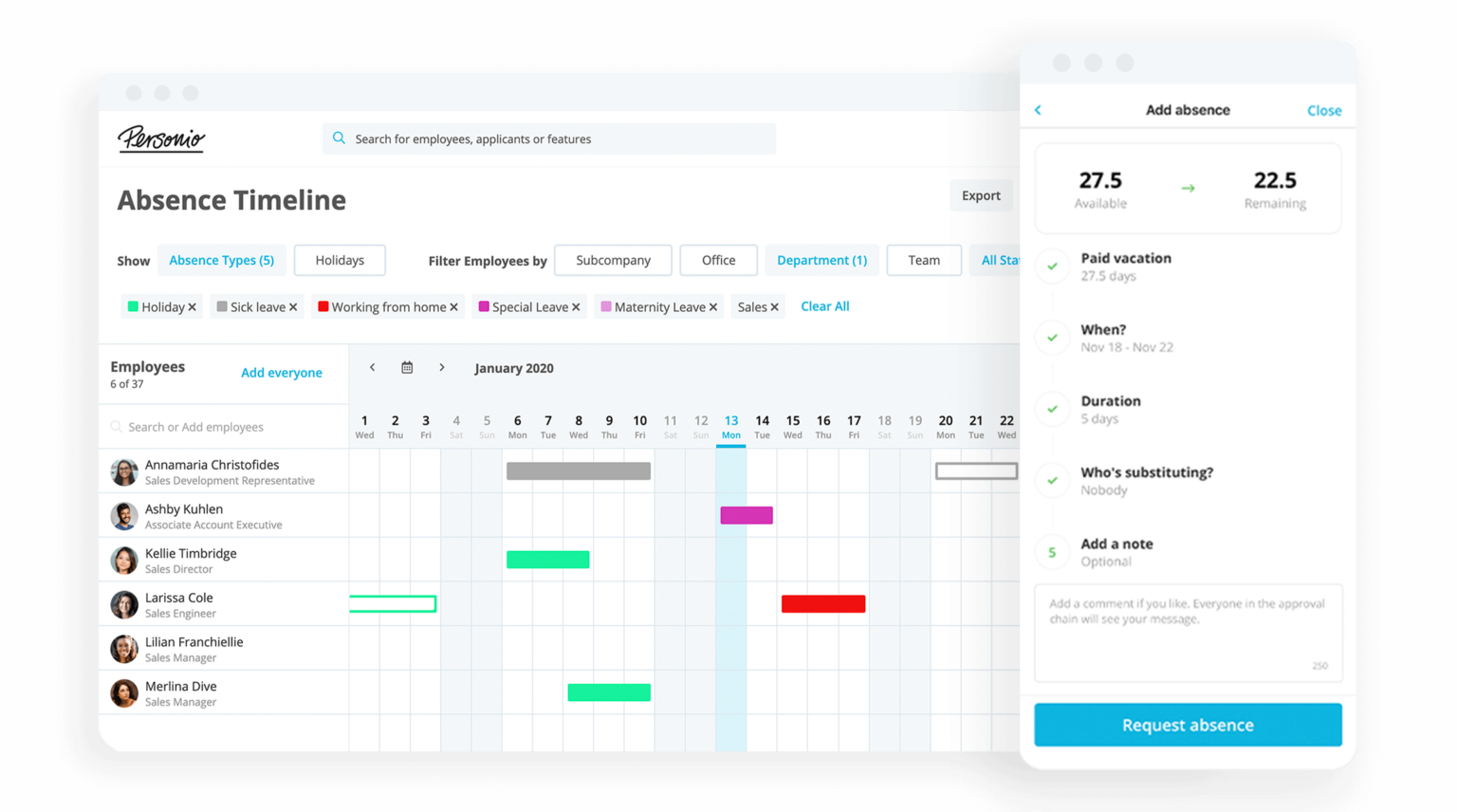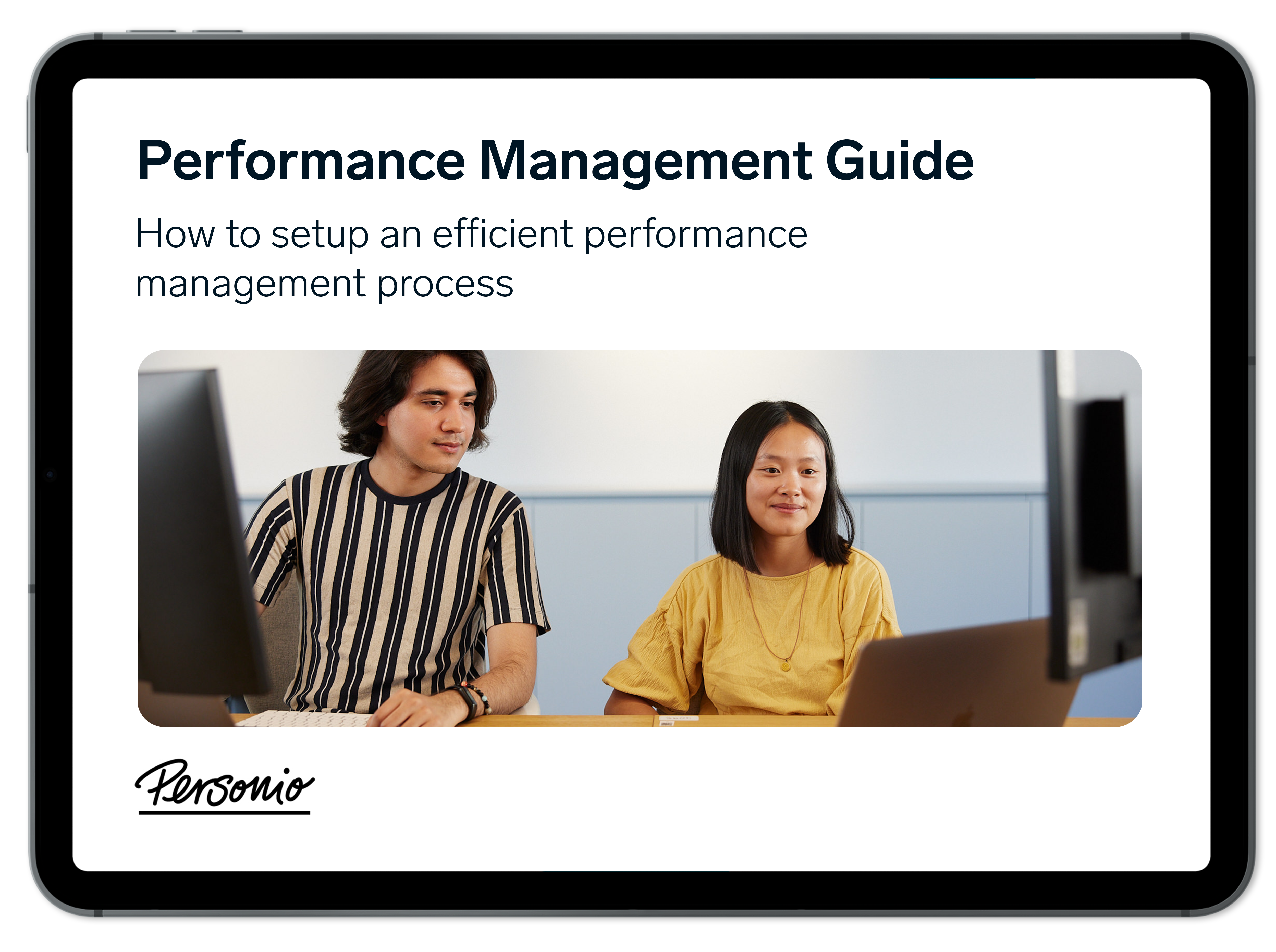Tuckman Model: Forming, Storming, Norming, Performing and Adjourning

The Tuckman model is most notable for mapping out how teams perform and how intra-team dynamics typically work. In this article, we offer a guide to the Tuckman model, the stages it has and how to lead teams through it.
Start from the top with our performance review template today.What Is the Tuckman Model?
The Tuckman model was developed by Bruce Tuckman in 1965. It seeks to understand the dynamics of teams and how they develop. The model itself is based on four unique stages of team development, which are as follows:
Forming
Storming
Norming
Performing
Ten years later, Tuckman added one more stage to the process called adjourning.
Leestip: Verdiep je in succesvolle strategieën voor personeelsontwikkeling die helpen bij het vasthouden van talent en het verhogen van werknemerstevredenheid.
The Five Phases of the Tuckman Model
The following are the key phases of the Tuckman model explained in detail:
Phase One: Forming
This is the stage where the team is just being formed. Everyone’s still being polite and friendly because they want to show their good sides to other team members. More importantly, the team’s dynamic is still not set at this stage, so no team members are aware of the “unwritten rules” or the team’s overall culture.
Leading through the Tuckman model:
Forming to Storming: The team leader needs to set the ground rules for how the team will function together. That means co-creating the rules and expectations from each team member toward the entirety of the team. Also, the manager should explain the goals, tasks and objectives of the team so that everyone knows what they need to do to make it happen.
Phase Two: Storming
Storming is the second stage of the Tuckman model and is where dissent and discomfort start to build up. Team members are no longer maintaining the facade of “best behaviour” and are starting to show the entirety of their character; both the good and the not-so-good.
This creates conflict and problems in the team and can cause quite a strain on the team’s culture and, eventually, performance.
Leading through the Tuckman model:
Storming to Norming: The entire team needs to embrace giving and receiving feedback so that they start rebuilding the trust that might have been lost during tumultuous times. The manager needs to ensure that even the quieter team members get a voice during this stage.
Phase Three: Norming
Norming is the stage where team members finally get the hang of their roles, understand what needs to be done and know the strengths and weaknesses of their fellow team members. The problems from the Storming stage finally settled down and the team members learned how to work together as a single unit, both professionally and personally.
The team that’s in this stage has laid all the groundwork to be a highly-functioning team.
Leading through the Tuckman model:
Norming to Performing: This is where the manager needs to go into more of a coaching role and use the insights of their team members. They can do so through coaching and 1-on-1 sessions where they will track the progress of each team member individually.
Introduce More Modern HR Processes

Seamless absence tracking, automated performance cycles and more. See how Personio can help your HR team today.
Book A Demo Today
Phase Four: Performing
In this stage, the team begins to run like a well-oiled machine. Everyone knows what needs to be done and are focused on achieving the goals and objectives of the entire team.
During Performing, team members are running almost autonomously and the manager’s role here is to make sure nothing stands in their way (including the manager). Supervision needed is at a minimum, since team members know what they need to do, know how to do it and know why they are doing it.
Leading through the Tuckman model:
Performing to Adjourning: Managers won’t have to interfere so much in work-related manners, but they will have to work with team members on their personal development. This is the stage where you will see which team members are showing leadership potential and which one of them can be put in a rising-star program in the organisation.
Phase Five: Adjourning
Adjourning is the last stage in the Tuckman model. It’s also the stage where the team has now achieved the objectives and the goals set out for them. There’s no longer a purpose driving the team and it’s time for everyone to go their separate ways.
The manager needs to ensure that they praise and reward their team members for the job well done and even write them recommendations for other teams.
Why is the Tuckman Model Useful?
The Tuckman model is quite simple to use and understand. You have five stages that the team goes through; they’re easy to remember and the progress is linear going from the first to the fifth stage.
In addition, this model provides managers with a quick and easy understanding of where the team’s at so they can act accordingly.
If the team’s struggling to act cohesively and there are a lot of conflicts, the manager knows that the team’s in the Storming stage and they know the recipe for getting out of it.
The Tuckman Model: Frequently Asked Questions
Here are the four most frequently asked questions regarding the Tuckman model:
What Is the Tuckman Model?
The Tuckman model is a model that helps managers understand team dynamics.
What Are the Stages of the Tuckman Model?
There are five stages of the Tuckman model: Forming, Storming, Norming, Performing and Adjourning.
What Is the Tuckman Model Used For?
The Tuckman model is used for easier team management.
What Is an Example of the ‘Norming’ Stage?
It’s where team members are no longer bogged down with conflict, but are working together for a common cause.
Give Your Leadership the Boost It Deserves
With Personio, you can lead your teams better. Drive employee performance to new heights with our Performance Management Software and make sure that your teams are always in the Performing stage starting today.


